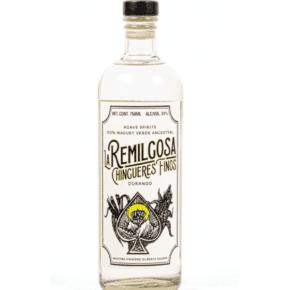Mosto, or “must” is the term used for the fermented agave juice that is distilled to make mezcal. The term mosto vivo, or living must, describes fluid that is actively fermenting, while mosto muerto, dead must, describes the fermented liquid, akin to beer, that is ready for distillation.
After the roasted piñas are shredded (be that via canoa, tahona, or mechanical means) the mezcalero transports the agave fiber and juice into a tank and adds water. (This diluted agave stew is known as aguamiel in some regions.) It ferments in tanks of all shapes, sizes, and materials, including stone, wood, ceramic, rawhide and, less romantically, stainless steel and plastic. (Plastic tanks are more common in raicilla production.) After about a day, ambient yeasts will begin converting the agave sugar into alcohol.
Seeing and smelling mosto vivo is exciting, partially because the fermentation process is such an essential part of making the best mezcal and partially because it’s a visceral experience to peer into a bubbling barrel of golden liquid and breathe the heady and fragrant steam. Aromas change as time passes and the mosto becomes less sweet. Fermentation can take anywhere between a few days to a month, depending on the season, the ambient yeasts, and the mezcalero’s preferences. If the mosto is allowed to sit after the wild yeasts have finished primary fermentation, ambient bacteria may play a secondary role in fermentation. These bacteria are typically responsible for the lactic notes in some agave spirits–which can range from creamily sweet to ripe like a funky French cheese.
Where and how long mosto evolves is a major reason we find such a range of notes and aromas in agave spirits. Fermentation is essential to the flavor profile of mezcal, and the care and thought put into the process can mean the difference between a mediocre mezcal and the best mezcal. To learn more about fermentation, check out Where do mezcal flavors come from?












Leave a Comment